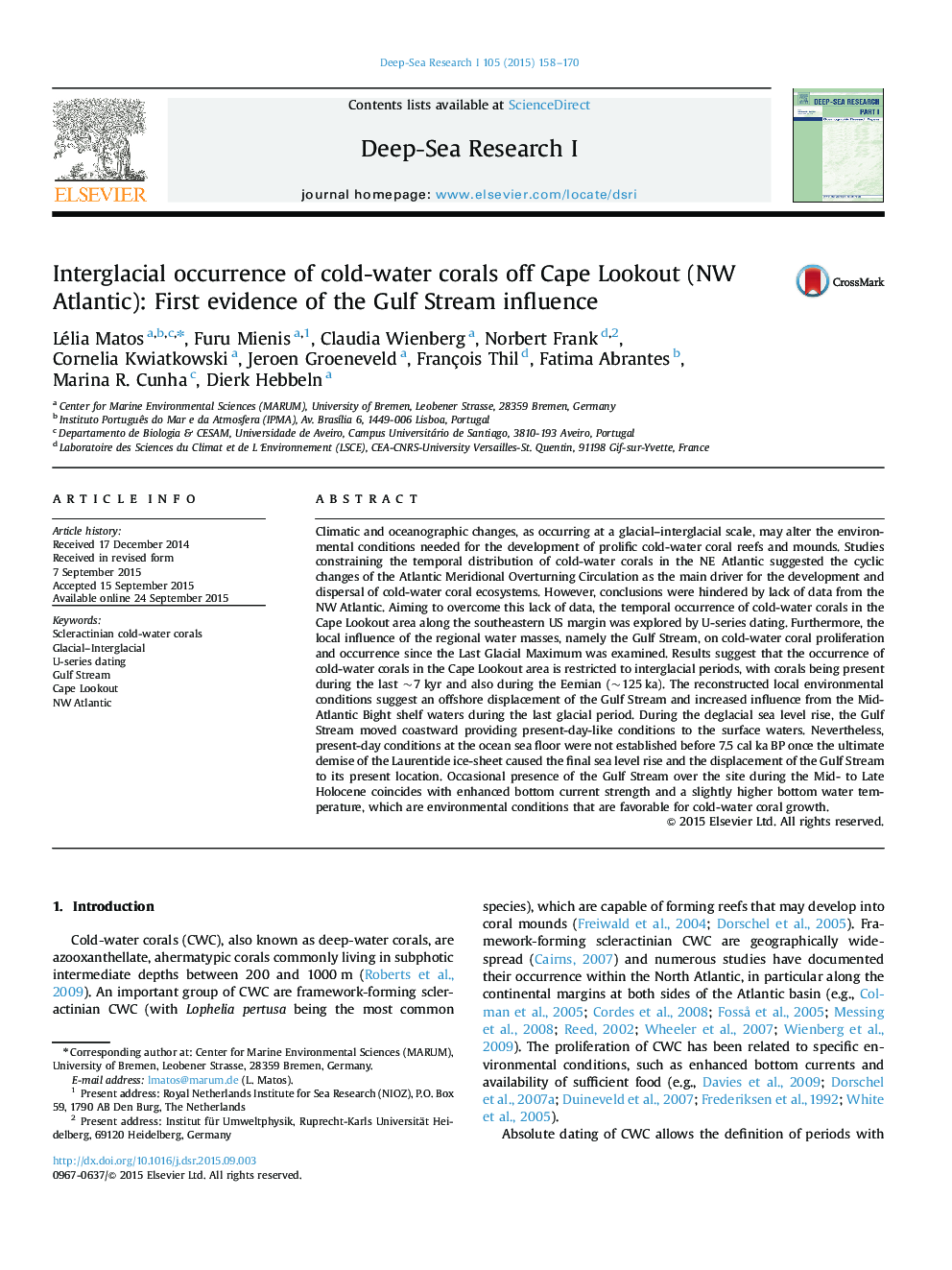| Article ID | Journal | Published Year | Pages | File Type |
|---|---|---|---|---|
| 4534477 | Deep Sea Research Part I: Oceanographic Research Papers | 2015 | 13 Pages |
•Cold-water corals in the Cape Lookout area (NW Atlantic) occur during interglacials.•Coral colonization is related to environmental changes driven by the Gulf Stream.•Holocene occurrence is related to enhanced currents and temperatures above 6 °C.
Climatic and oceanographic changes, as occurring at a glacial–interglacial scale, may alter the environmental conditions needed for the development of prolific cold-water coral reefs and mounds. Studies constraining the temporal distribution of cold-water corals in the NE Atlantic suggested the cyclic changes of the Atlantic Meridional Overturning Circulation as the main driver for the development and dispersal of cold-water coral ecosystems. However, conclusions were hindered by lack of data from the NW Atlantic. Aiming to overcome this lack of data, the temporal occurrence of cold-water corals in the Cape Lookout area along the southeastern US margin was explored by U-series dating. Furthermore, the local influence of the regional water masses, namely the Gulf Stream, on cold-water coral proliferation and occurrence since the Last Glacial Maximum was examined. Results suggest that the occurrence of cold-water corals in the Cape Lookout area is restricted to interglacial periods, with corals being present during the last ~7 kyr and also during the Eemian (~125 ka). The reconstructed local environmental conditions suggest an offshore displacement of the Gulf Stream and increased influence from the Mid-Atlantic Bight shelf waters during the last glacial period. During the deglacial sea level rise, the Gulf Stream moved coastward providing present-day-like conditions to the surface waters. Nevertheless, present-day conditions at the ocean sea floor were not established before 7.5 cal ka BP once the ultimate demise of the Laurentide ice-sheet caused the final sea level rise and the displacement of the Gulf Stream to its present location. Occasional presence of the Gulf Stream over the site during the Mid- to Late Holocene coincides with enhanced bottom current strength and a slightly higher bottom water temperature, which are environmental conditions that are favorable for cold-water coral growth.
